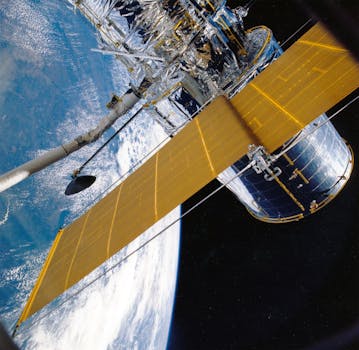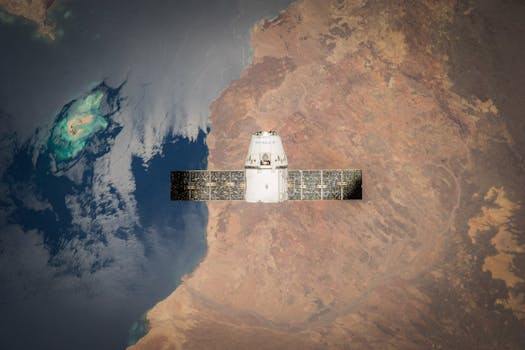From Geostationary to Low Earth Orbit: The Evolution of Satellite Telecommunications in 2023 with Focus Keyword Satellite Telecommunications

Satellite Telecommunications has undergone significant transformations over the years, and 2023 has been no exception. The shift from geostationary to low Earth orbit (LEO) satellites has revolutionized the telecommunications industry, offering faster, more efficient, and cost-effective solutions. In this article, we will delve into the evolution of satellite telecommunications, exploring the benefits and advancements of LEO satellites and their impact on the industry.
The geostationary orbit, which was the primary orbit used for telecommunications satellites, has been the backbone of the industry for decades. However, with the increasing demand for faster and more reliable connectivity, the need for a new solution arose. LEO satellites, which orbit the Earth at an altitude of approximately 160 to 2,000 kilometers, have emerged as a game-changer in the industry. These satellites offer lower latency, higher bandwidth, and improved connectivity, making them ideal for a wide range of applications, including broadband internet, mobile networks, and IoT connectivity.
One of the primary advantages of LEO satellites is their ability to provide global coverage with a lower latency compared to geostationary satellites. This is because LEO satellites are closer to the Earth, resulting in a shorter signal transmission time. Additionally, LEO satellites can be launched in constellations, allowing for multiple satellites to work together to provide continuous coverage and redundancy. This approach has enabled the development of new services, such as satellite-based broadband internet, which can provide high-speed connectivity to remote and underserved areas.
Advancements in Satellite Technology

The evolution of satellite telecommunications has been driven by advancements in satellite technology. Improvements in materials, propulsion systems, and electronics have enabled the development of smaller, more efficient, and cost-effective satellites. For instance, the use of advanced materials like carbon fiber has reduced the weight and size of satellites, making them easier to launch and deploy. Furthermore, the development of electric propulsion systems has increased the fuel efficiency of satellites, allowing them to operate for longer periods and reducing the need for frequent replacements.
Another significant advancement in satellite technology is the development of phased array antennas. These antennas use advanced beamforming techniques to direct signals to specific areas, increasing the efficiency and capacity of satellite communications. Phased array antennas have enabled the development of high-throughput satellites, which can provide multiple gigabits of data per second. This has transformed the satellite telecommunications industry, enabling the provision of high-speed broadband internet and other data-intensive services.
Impact on the Telecommunications Industry

The shift to LEO satellites has had a profound impact on the telecommunications industry. The increased capacity, lower latency, and improved connectivity offered by LEO satellites have enabled the development of new services and applications. For example, satellite-based broadband internet can provide high-speed connectivity to remote and underserved areas, bridging the digital divide and enabling access to essential services like healthcare, education, and finance.
The use of LEO satellites has also transformed the mobile networks industry. Satellite-based mobile networks can provide coverage to areas where traditional cellular networks are not available, enabling mobile operators to extend their services to new areas. Additionally, LEO satellites can be used to provide backup connectivity during outages or disasters, ensuring that critical communications services remain available.
Conclusion

In conclusion, the evolution of satellite telecommunications has transformed the industry, with the shift from geostationary to LEO satellites offering faster, more efficient, and cost-effective solutions. The advancements in satellite technology, including the development of phased array antennas and electric propulsion systems, have enabled the provision of high-throughput satellites and improved connectivity. As the demand for satellite telecommunications continues to grow, the industry is expected to witness further innovations and developments, driving the adoption of satellite-based services and applications.
See more:







